“When we perform in an all women squad, I always essay the role of ‘Bhima'” said Gouramma an established leather puppet artist from a remote village in Ramnagar in Karnataka. The glint of pride in her voice was unmissable as she narrates how this art has been an integral part of her life. Her parents were artists and so were her grandparents and husband’s family.
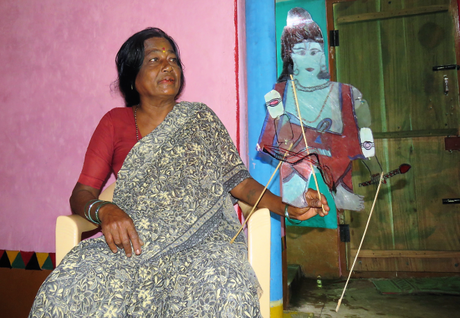 Gouramma a leather puppet artist from Karnataka
Gouramma a leather puppet artist from Karnataka
Traditional folk art
Native to Karnataka, Thogalu Gombeyata or Togalu Bombeyata is an art form that involves the movement of leather puppets against light creating a unique play of shadows. The term “thogalu” means hide of animal skin while “gombeyata” refers to puppetry. This form of shadow puppetry involves the artist sitting behind the source of light and manipulating the puppet’s movement according to the theme of the show.
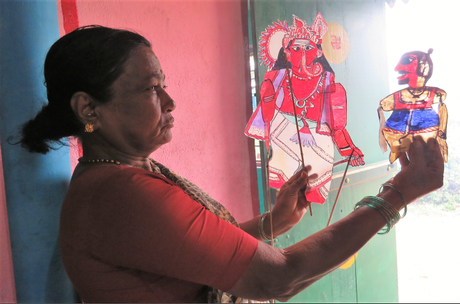
Practised by a special community of people who are called “Killekyata”, this folk art is prevalent throughout the state albeit with slight variations. The people belonging to this community are also called “Gombe Ramaru” or “Sillekyata” and are believed to be originally from Maharashtra. They perform in troupes and the members of one troupe usually belong to one family.

Preparing the dolls
The community of Killekyatas attach a very high level of importance to the puppets they create as they believe that these dolls are the lifeline and soul of their existence. It is not viewed as a mere means to perform a show which is also called “Uttaranga”. They are of the firm belief that the stage of manufacture of these dolls that is referred to as “Poorvaranga” or “Siddatharanga” is of equal significance if not more. The puppets whose size range from a foot to even 6 feet in length are prepared from the skin of animals like sheep, goats and even buffalo. Earlier deer skin was also commonly used.
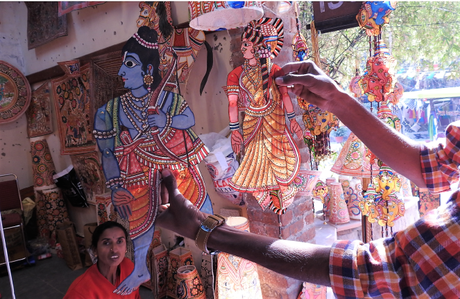
The hides go through an elaborate process during which the skin is treated with chemicals, hair is removed, after which it is dried in the shade. The process is repeated until the hide becomes translucent and almost has a “plastic like” feel to it. An outline of the doll is drawn now on this surface and it is painted on both sides using organic colours.

These days it is common to use chemical colours too. While the one entire piece of hide maybe used to prepare one doll, it is also common to use it only to make the face and use other pieces to make the hands and legs separately. The figures are then stitched together such that the individual limbs move. Either way the doll is mounted on a bamboo stick with part of the stick protruding out which is held by the artist.
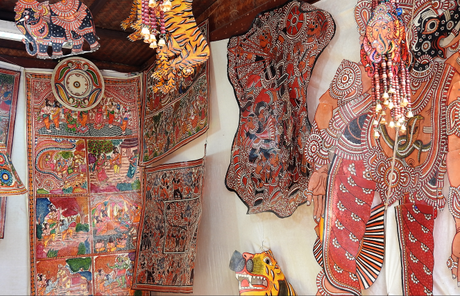
Puppet show
The shows are largely inspired from the tales of the Mahabharata and Ramayana with Hanuman being one of the most popular puppets and a favorite character. A large stage is set up central to which is the white screen behind which the main artist moves the puppet in front of a well-lit lamp or a low voltage light bulb. As the shadow is formed on the screen, the other members of the troupe provide music and deliver the dialogues.
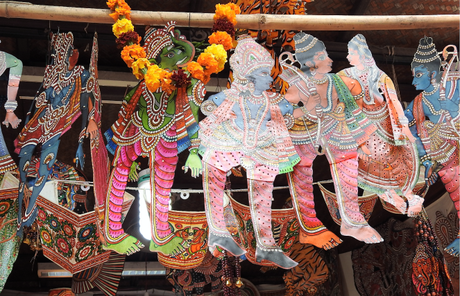
After the show, the dolls are carefully packed and preserved in a box and even worshipped on special days like “Amavasya”. Just like the art form, even the dolls are passed on like heirlooms from one generation to the next. Like with many other traditional art and crafts, the number of families practicing this art is fast dwindling. However, there are efforts from the government, NGOs and other organizations that promises a better future for this folk-art form.
This article was originally published in The Tribune here.
